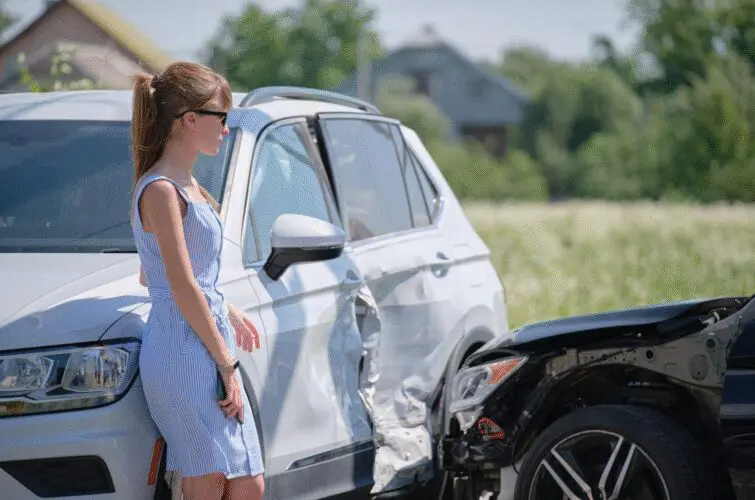How a Buffalo Car Accident Attorney Proves Liability Under New York Law

Car accidents can lead to unpredictable medical expenses, lost income, and prolonged physical recovery. For victims, securing compensation depends on one central issue: proving who bears legal responsibility for the collision. Establishing liability under New York law requires evidence, a thorough understanding of relevant legal principles, and prompt action to ensure a successful outcome. A Buffalo car accident attorney focuses on gathering facts and presenting arguments that clearly demonstrate fault, whether in negotiations or in court.
The Legal Framework for Proving Fault in New York
New York law requires proof that the at-fault driver acted carelessly and that this negligence directly caused injuries. A Buffalo car accident attorney begins with four legal elements: duty of care, breach of that duty, causation, and damages. Every driver has a responsibility to operate a vehicle safely and responsibly. Breaching this duty through reckless driving, distracted behavior, or intoxication creates liability when injuries result. Attorneys work systematically through each element to establish a transparent chain of responsibility.
Collecting and Preserving Critical Evidence
Evidence serves as the backbone of liability. Accident reports from law enforcement deliver an official version of the crash. Medical records connect the injuries to the collision. Attorneys also use photographs of the accident scene, skid marks, and vehicle damage to illustrate how the impact occurred. Witness testimony further supports the sequence of events. Preserving this information early strengthens the claim, since delays can result in lost or degraded evidence.
The Role of Accident Reconstruction Experts
In complex cases, attorneys often rely on accident reconstruction specialists to provide expert analysis and testimony. These professionals analyze the scene, review vehicle data, and apply physics to recreate the collision’s sequence of events. Their findings help determine speed, point of impact, and driver behavior at the time of the accident. Courts and insurers give significant weight to expert analysis, which often tips the scale when liability is contested.
Comparative Negligence and Shared Fault Rules
New York follows a pure comparative negligence system. This rule allows victims to recover damages even if they share some blame for the accident. However, compensation decreases according to the percentage of fault assigned to the party. For example, if a victim is found to be thirty percent responsible, the final award is reduced by that percentage. Attorneys aim to minimize fault attributed to their clients by presenting evidence that shifts responsibility to the other driver.
Proving Liability Through Traffic Law Violations
Traffic violations often provide strong evidence of negligence. Running a red light, speeding, failing to yield, or driving under the influence clearly indicate a breach of duty. Attorneys review police citations, breathalyzer results, and witness statements to demonstrate how the violation contributed to the crash. Using these violations in legal arguments often provides a straightforward way to establish liability in settlement negotiations or at trial.
Insurance Company Challenges in Proving Fault
Insurance carriers rarely accept liability without resistance. Adjusters may argue that the victim’s injuries existed before the accident, that treatment was unnecessary, or that the victim contributed to the collision. Attorneys counter these claims by presenting organized documentation, medical testimony, and detailed evidence. Preparing for these challenges ensures that the insurer cannot unfairly diminish or deny valid claims.
Medical Documentation and Long-Term Damages
Medical evidence not only proves injury but also supports the connection between the accident and future treatment needs. Attorneys work with healthcare providers to collect diagnostic results, physician notes, and rehabilitation plans. This information links the injuries directly to the crash and establishes the long-term impact on the victim’s life. Without this connection, insurers often attempt to downplay compensation for ongoing or permanent conditions.
Litigation as a Path to Proving Liability
When insurers refuse fair settlement offers, attorneys move forward with litigation. Filing a lawsuit allows access to discovery tools, including depositions, interrogatories, and subpoenas. These tools uncover additional evidence such as cell phone records, traffic camera footage, and maintenance logs. Presenting this information in court strengthens the argument for liability and often pressures insurers to settle before the trial concludes.
Knowledge as a Tool for Recovery
Understanding how liability works in New York helps victims appreciate the value of organized evidence, expert testimony, and timely legal action. Proving fault requires more than pointing to another driver; it involves connecting laws, facts, and documentation into a persuasive argument. With this knowledge, victims gain a clearer view of the process and prepare themselves for the challenges of pursuing compensation.
Read more on
MyCarHeaven are on Instagram. Go check us out and do follow us.
Go visit the MyCarHeaven Instagram page. We post regular quality content, predominantly focused on classic cars, supercars, hypercars and car shows. We also feature all our competitions here, where you will have the chance IF YOU FOLLOW US and you follow the competition entry criteria, you could be in with a chance of winning tickets to the best UK car shows, and other automotive stuff.
Go to the MyCarHeaven Instagram account here. Advertisement
Advertisement Advertisement
Advertisement Advertisement
Advertisement Advertisement
Advertisement




